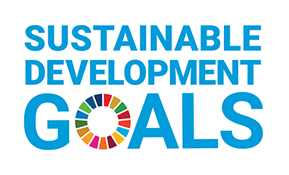At a GlanceReport 10—Securing Personal Protective Equipment and Medical Devices
Why we did this audit
- This audit is important because Personal Protective Equipment (PPE) and medical devices are vital for the safety of Canadians, particularly front-line workers and patients. This equipment is even more important during a pandemic. Management of the equipment has to be effective so that there is a sufficient supply when a public health emergency happens, and so that the infrastructure and processes are in place to meet increased demand during such emergencies.
- Emergencies such as the COVID‑19 pandemic can occur at any time with little warning. These events may require timely access to essential provisions in the federal stockpile, such as an inventory of PPE and medical devices based on expert advice, to help protect the health and safety of Canadians.
Our findings
- As a result of long-standing unaddressed problems with the systems and practices in place to manage the National Emergency Strategic Stockpile, the Public Health Agency of Canada was not as prepared as it could have been to respond to the surge in provincial and territorial needs for PPE and medical devices brought on by the COVID‑19 pandemic.
- The Public Health Agency of Canada improved how it managed the assessment and allocation of personal protective equipment and medical devices to help meet provincial and territorial needs
- Health Canada modified its processing of supplier licence applications to respond more rapidly to increasing demand
- Public Services and Procurement Canada mobilized resources and modified its procurement activities to quickly buy the required equipment on behalf of the Public Health Agency of Canada to respond to the pandemic.
Key facts and figures
- The federal government reported that as of 31 December 2020, it had spent more than $7 billion on PPE and medical devices.
- We found that the unaddressed federal stockpile issues had been brought to the Public Health agency’s attention through a series of internal audits dating back to at least 2010.
- In August 2020, the Public Health Agency of Canada began to use a new, long-term national supply and demand model, whose development was led by Health Canada during the summer of 2020.
- In February 2020, the Public Health Agency of Canada received the first direct request for assistance from a province or territory for equipment in its National Emergency Strategic Stockpile.
- All medical devices sold in Canada, including PPE sold for medical use, are subject to licensing requirements.
Highlights of our recommendations
- The Public Health Agency of Canada should develop and implement a comprehensive National Emergency Strategic Stockpile management plan with clear timelines that responds to relevant federal stockpile recommendations made in previous internal audits and lessons learned from the COVID‑19 pandemic.
- Health Canada should determine whether respirators are appropriately classified given that Class I medical devices are not subject to a Health Canada review for safety and effectiveness.
- Public Services and Procurement Canada, while addressing urgent needs and accepting procurement risks, should conduct checks of the financial strength of suppliers before awarding contracts that involve advance payment.


Helping to meet the needs of provincial and territorial governments for selected PPE and medical devices and providing adequate procurement support is related to target 3.d of the Sustainable Development Goals: “Strengthen the capacity of all countries, in particular developing countries, for early warning, risk reduction and management of national and global health risks.
Visit our Sustainable Development page to learn more about sustainable development and the Office of the Auditor General of CanadaOAG.
Related information
| Entities | |
|---|---|
| Completion date | 24 March 2021 |
| Tabling date | 26 May 2021 |
| Related audits |
|